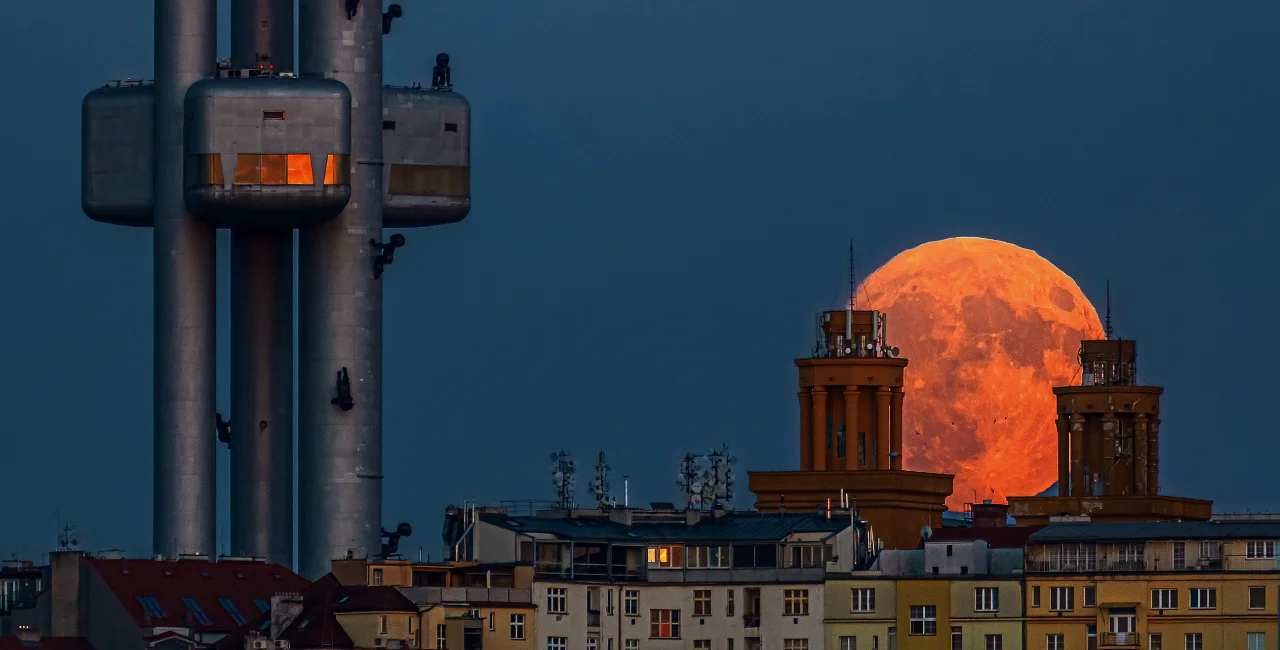August brings two supermoons, including a blue moon at the end of the month. If the sky is clear, the moonrise should be visible from any place with a clear view of the horizon to the southeast. These are the second and third of four supermoons in a row this year. July and September also have them.
In Prague, good viewing places include Letná Park, the lookout points by the entrances to Prague Castle, Vitkov Hill, Parukářka Park, and the northern side of the entrance to the Nusle Bridge. Binoculars or a telescope can be used to see the moon, but these aren’t necessary. For taking pictures with a camera, a tripod helps to get a sharper image.
A supermoon occurs when the moon is closer than normal to the Earth when it is full, which makes it larger and brighter than usual. Most astronomers say a supermoon occurs when the moon is within 90 percent of its perigee, the closest possible approach to Earth. The last time two full supermoons occurred in the same month was in 2018 and it won’t happen again until 2037.

The first supermoon comes already on Aug. 1, and it will be visible starting around 9:15 p.m., shortly after sunset, but the sky should still be fairly bright. The moon should take on a pink or orange glow as it rises. It will be 358,971 kilometers from Earth’s center, which makes it the second-closest supermoon of this year, according to the astronomy website Time and Date.
This one is called the Sturgeon Moon, because this type of fish was plentiful in lakes in the U.S. this time of year. Other cultures have different names. Celts, for example, called it the Dispute Moon and the Anglo-Saxons called it the Grain Moon.
Blue supermoon at the end of the month

The month’s second supermoon is Aug. 30, and it will rise at around 8:05 p.m. in the southeast, though a bit more to the east this time. This one will be to closest of the four supermoons this year, a mere 357,268 kilometers from the Earth’s center.

Only the first full moon of the month has a name, so this second one is commonly called a calendrical blue moon. It won’t actually be blue in color. It should look pink or orange, just like the first full moon of the month. The moon can actually look blue after forest fires or volcanic eruptions due to the dust particles in the atmosphere, but this is truly rare and likely the inspiration for the phrase “once in a blue moon.”
In between these two full moons, the new moon will be the smallest of the year, as it will be 406,634 kilometers from the center of the earth. The new moon is when the moon is completely dark in the sky, so it won’t be visible to the naked eye.

Harvest supermoon in September
The most widely known name for a full moon is likely the one that occurs in September, the Harvest Moon. The name was popularized by the song Shine On, Harvest Moon, from the early 1900s, and the name has appeared in many other songs and elements of popular culture.
This year’s harvest moon falls on Sept. 29, and it is the last of this year’s four supermoons. It will rise at 6:56 p.m. and almost due east in the sky. It will be some 360,614 kilometers from the Earth’s center.
Due to its early appearance during daylight hours, this one will be ideal for amateur photographers and even people with just a smartphone camera to catch the moon with Prague landmarks visible in the foreground. If the skies aren’t clear in Prague or you can’t get to a suitable spot to see the supermoons rising, they will be streamed online from a telescope in Rome.
For people interested in seeing the night sky, the Štefánik Observatory (Štefánikova hvězdárna) on Petřín Hill in August is open daily from 9 p.m. to 11 p.m. and in September from 8 p.m. to 10 p.m., weather permitting. The staff finds various planets and other visible objects in the sky.












 Reading time: 3 minutes
Reading time: 3 minutes 























